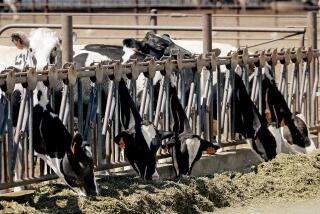H1N1 and other flus off to an early start around the U.S.
With the traditional start of the flu season upon us this weekend, 27 states are already reporting widespread activity of the pandemic H1N1 influenza virus, with the rest reporting more limited activity, according to the Centers for Disease Control and Prevention.
Outpatient visits for influenza-like illnesses were above normal for every region of the country except New England.
Between Aug. 30 and Sept. 29, the U.S. had 16,174 hospitalizations and 1,379 deaths associated with influenza, the vast majority of them swine-flu-related. During roughly that same period, 11 pediatric deaths associated with swine flu were reported to the CDC, bringing to 128 the total number since Sept. 28, 2008.
The most recent numbers for severe illness from swine flu in pregnant women, through late August, indicate that about 100 had been in hospital intensive care units with complications and 28 had died.
The CDC has not tracked flu complications in pregnant women in the past, so there is no baseline for comparison. But obstetricians “say they have never seen this kind of thing before,” said Dr. Anne Schuchat, director of the National Center for Immunization and Respiratory Diseases.
Treatment with antiviral drugs like Tamiflu “can be very important” in saving the lives of pregnant women, Schuchat said. She noted that “vaccination is the best way to protect yourself.”
The CDC had reported last week that there was a shortage of an oral suspension of Tamiflu for infants and young children. Schuchat said that as of Wednesday, Health and Human Services Secretary Kathleen Sebelius had released 300,000 courses of liquid Tamiflu from the national stockpile, to be made available to states based on population.
The first shipments went out Thursday, with 22,000 courses going to Texas and 4,600 to Colorado. The Tamiflu being released is technically past its shelf expiration date, but testing by the Food and Drug Administration shows that it retains its full potency, Schuchat said.
The CDC received its first orders for swine flu vaccine Wednesday from 25 localities, Schuchat said. The first batches of vaccine, primarily the nasal spray vaccine FluMist, will be shipped Monday and arrive Tuesday.
Schuchat said that 6 million to 7 million doses total of intranasal and injectable vaccines will be available next week, and that availability in subsequent weeks should average about 20 million doses per week.
The Los Angeles County Department of Public Health said Friday that it expected to receive its first doses of FluMist by the end of next week.
In data released by CDC researchers Wednesday, autopsy results from 77 people who died of swine flu complications showed that in a third of the cases, the patient suffered from pneumonia caused by a bacterial infection. More than half of those were associated with Streptococcus pneumoniae.
The good news, Schuchat said, is that “we have a vaccine for that.” The bad news is that for nonelderly adults, only about one in five of those who should be getting the vaccine, Pneumovax, actually do.
--
More to Read
Sign up for Essential California
The most important California stories and recommendations in your inbox every morning.
You may occasionally receive promotional content from the Los Angeles Times.










